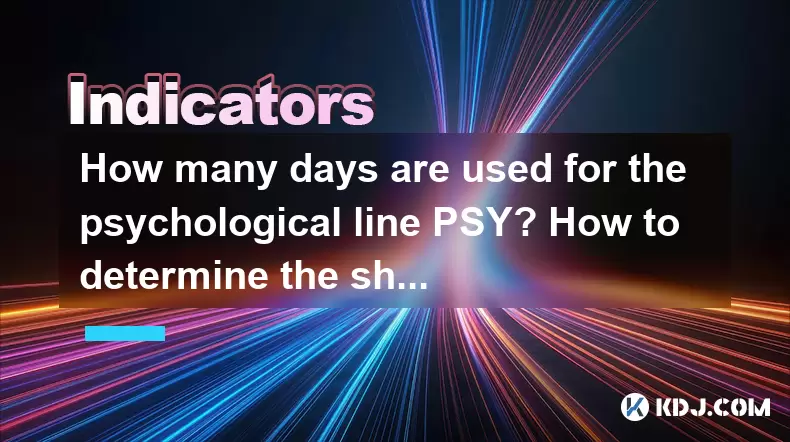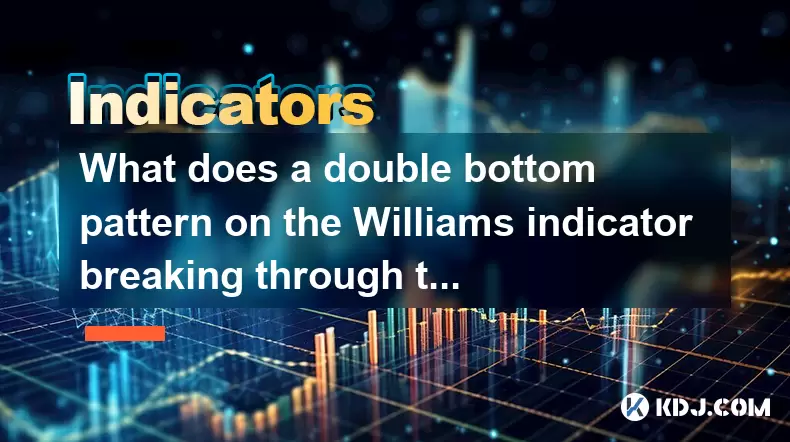-
 Bitcoin
Bitcoin $116400
-0.36% -
 Ethereum
Ethereum $4033
3.40% -
 XRP
XRP $3.302
-1.26% -
 Tether USDt
Tether USDt $1.000
-0.02% -
 BNB
BNB $796.1
1.67% -
 Solana
Solana $177.8
1.89% -
 USDC
USDC $0.9999
0.00% -
 Dogecoin
Dogecoin $0.2314
4.09% -
 TRON
TRON $0.3381
0.14% -
 Cardano
Cardano $0.7989
1.22% -
 Stellar
Stellar $0.4496
-1.84% -
 Chainlink
Chainlink $20.42
9.42% -
 Hyperliquid
Hyperliquid $41.17
0.88% -
 Sui
Sui $3.914
3.77% -
 Bitcoin Cash
Bitcoin Cash $584.7
1.52% -
 Hedera
Hedera $0.2632
-0.54% -
 Avalanche
Avalanche $24.09
3.40% -
 Ethena USDe
Ethena USDe $1.001
-0.02% -
 Litecoin
Litecoin $123.2
1.33% -
 Toncoin
Toncoin $3.318
-0.04% -
 UNUS SED LEO
UNUS SED LEO $8.984
-0.05% -
 Shiba Inu
Shiba Inu $0.00001323
2.85% -
 Uniswap
Uniswap $10.90
4.41% -
 Polkadot
Polkadot $3.999
3.34% -
 Dai
Dai $1.000
0.01% -
 Cronos
Cronos $0.1630
9.64% -
 Bitget Token
Bitget Token $4.484
0.82% -
 Monero
Monero $272.4
2.44% -
 Pepe
Pepe $0.00001173
6.03% -
 Aave
Aave $290.8
2.88%
How many days are used for the psychological line PSY? How to determine the short-term threshold?
The PSY line, a key crypto trading indicator, uses a 12-day period to gauge market sentiment, with thresholds at 75% and 25% signaling potential overbought or oversold conditions.
Jun 02, 2025 at 03:43 am

The psychological line, often referred to as PSY in the cryptocurrency trading community, is a technical indicator that measures the percentage of periods in which the market closed higher than the previous period over a specified time frame. This indicator helps traders gauge the overall sentiment of the market, whether it is bullish or bearish. The most commonly used time frame for the PSY line in cryptocurrency trading is 12 days. This duration is considered optimal for capturing short-term market sentiment without being overly influenced by minor fluctuations.
Understanding the PSY Line
The PSY line is calculated by taking the number of days where the closing price was higher than the previous day's closing price and dividing it by the total number of days in the chosen period. For instance, if over a 12-day period, there were 8 days where the closing price was higher than the previous day, the PSY line would be calculated as follows: (8 / 12) 100 = 66.67%. This percentage represents the level of bullish sentiment in the market.
Importance of the 12-Day Period
The choice of 12 days for the PSY line is significant because it provides a balance between sensitivity to market changes and the smoothing out of short-term volatility. A shorter period might make the indicator too reactive to daily fluctuations, while a longer period could make it less responsive to emerging trends. The 12-day period has been empirically found to be effective in reflecting the short-term sentiment in the cryptocurrency market.
Determining the Short-Term Threshold
The short-term threshold for the PSY line is a critical aspect of using this indicator effectively. It helps traders identify potential overbought or oversold conditions in the market. The commonly accepted thresholds for the PSY line are 75% and 25%. When the PSY line crosses above 75%, it suggests that the market may be overbought, and a correction could be imminent. Conversely, if the PSY line drops below 25%, it indicates that the market might be oversold, and a rebound could be on the horizon.
Calculating the PSY Line
To calculate the PSY line, follow these steps:
- Collect Data: Gather the closing prices for the last 12 days.
- Compare Prices: Determine the number of days where the closing price was higher than the previous day's closing price.
- Calculate the Ratio: Divide the number of days with a higher close by 12.
- Convert to Percentage: Multiply the result by 100 to get the PSY value.
For example, if over the last 12 days, the closing price was higher than the previous day on 9 occasions, the PSY line would be calculated as (9 / 12) 100 = 75%.
Interpreting the PSY Line
Interpreting the PSY line involves understanding its position relative to the established thresholds. A PSY value above 75% indicates strong bullish sentiment, which might be a signal to consider taking profits or preparing for a potential market correction. On the other hand, a PSY value below 25% suggests strong bearish sentiment, which could be an opportunity to buy at lower prices in anticipation of a market rebound.
Using the PSY Line in Trading
Traders can use the PSY line in conjunction with other technical indicators to make more informed trading decisions. For instance, combining the PSY line with moving averages or the Relative Strength Index (RSI) can provide a more comprehensive view of market conditions. If the PSY line indicates an overbought market and the RSI also shows a high value, it might reinforce the decision to sell or reduce positions.
Practical Example of PSY Line Application
Consider a scenario where the PSY line for Bitcoin over the last 12 days is calculated to be 80%. This high value suggests that the market is overbought, and there might be a potential for a price correction. A trader might decide to sell some of their Bitcoin holdings to lock in profits. Conversely, if the PSY line drops to 20%, indicating an oversold market, the trader might see this as an opportunity to buy Bitcoin at a lower price, expecting a future price increase.
Limitations of the PSY Line
While the PSY line is a useful tool, it has its limitations. It is a lagging indicator, meaning it reflects past market conditions rather than predicting future movements. Additionally, the PSY line can sometimes give false signals, especially in highly volatile markets like cryptocurrencies. Therefore, it is essential to use the PSY line in conjunction with other indicators and fundamental analysis to make well-rounded trading decisions.
Frequently Asked Questions
Q1: Can the PSY line be used for long-term trading in the cryptocurrency market?
The PSY line is primarily designed for short-term analysis due to its focus on a 12-day period. While it can be adjusted for longer time frames, its effectiveness diminishes as the period lengthens, making it less suitable for long-term trading strategies.
Q2: How does the PSY line differ from other sentiment indicators like the RSI?
The PSY line and the RSI (Relative Strength Index) both measure market sentiment, but they do so differently. The PSY line focuses on the percentage of days with a higher close, providing a direct measure of bullish sentiment. In contrast, the RSI measures the speed and change of price movements, which can indicate overbought or oversold conditions based on momentum.
Q3: Is it possible to adjust the PSY line's period for different cryptocurrencies?
Yes, the PSY line's period can be adjusted to suit different cryptocurrencies or trading strategies. However, the 12-day period is widely used and considered effective for most cryptocurrencies due to its balance between sensitivity and smoothing out volatility.
Q4: How can the PSY line be integrated into a trading platform?
To integrate the PSY line into a trading platform, follow these steps:
- Select a Platform: Choose a trading platform that supports custom indicators, such as TradingView or MetaTrader.
- Create the Indicator: Use the platform's scripting language (e.g., Pine Script for TradingView or MQL4 for MetaTrader) to write the code for the PSY line.
- Input Parameters: Set the period to 12 days and define the thresholds at 75% and 25%.
- Add to Chart: Apply the custom indicator to your cryptocurrency chart to visualize the PSY line and its thresholds.
By following these steps, traders can effectively use the PSY line to enhance their trading strategies within the cryptocurrency market.
Disclaimer:info@kdj.com
The information provided is not trading advice. kdj.com does not assume any responsibility for any investments made based on the information provided in this article. Cryptocurrencies are highly volatile and it is highly recommended that you invest with caution after thorough research!
If you believe that the content used on this website infringes your copyright, please contact us immediately (info@kdj.com) and we will delete it promptly.
- Moat Stocks & Mega-Cap Momentum: July's Standout Performance
- 2025-08-09 12:30:12
- Injective (INJ) Eyes $15.39 Breakout Amidst Explosive Network Growth
- 2025-08-09 12:30:12
- HAT Token Mania: Price Surges, Crypto Auctions, and Meme Coin Mayhem
- 2025-08-09 11:10:11
- Undervalued Cryptos Primed for a 2025 Takeoff: MAGACOIN, TRX, and SUI Lead the Pack
- 2025-08-09 11:10:11
- Bitcoin Goes to Harvard: Ivy League Embraces Digital Assets
- 2025-08-09 10:50:12
- Bitcoin, BlockDAG, and Toncoin: Decoding the Crypto Buzz in NYC
- 2025-08-09 11:30:11
Related knowledge

What does it mean when the Triple Moving Average (TRIX) turns downward but the price doesn't fall?
Aug 09,2025 at 12:42pm
Understanding the Triple Moving Average (TRIX) IndicatorThe Triple Moving Average, commonly known as TRIX, is a momentum oscillator designed to filter...

What does it mean when the Williams' oscillator repeatedly hits bottoms but fails to rebound?
Aug 09,2025 at 09:28am
Understanding the Williams %R OscillatorThe Williams %R oscillator, developed by Larry Williams, is a momentum indicator used in technical analysis to...

What does a double bottom pattern on the Williams indicator breaking through the 50-day midline indicate?
Aug 09,2025 at 10:56am
Understanding the Williams %R IndicatorThe Williams %R indicator, developed by Larry Williams, is a momentum oscillator that measures overbought and o...

What does it mean when the MACD-histogram turns from green to red but the DIF line fails to form a golden cross?
Aug 09,2025 at 10:15am
Understanding the MACD and Its ComponentsThe MACD (Moving Average Convergence Divergence) is a widely used technical analysis tool in the cryptocurren...

When the J line in the KDJ indicator suddenly turns downward after being continuously overbought, does it indicate a top?
Aug 09,2025 at 06:35am
Understanding the KDJ Indicator and Its ComponentsThe KDJ indicator is a momentum oscillator widely used in cryptocurrency technical analysis to ident...

What does it mean when the TRIX indicator suddenly diverges downward after a long period of convergence?
Aug 09,2025 at 12:56am
Understanding the TRIX Indicator in Cryptocurrency TradingThe TRIX indicator, or Triple Exponential Average, is a momentum oscillator used in technica...

What does it mean when the Triple Moving Average (TRIX) turns downward but the price doesn't fall?
Aug 09,2025 at 12:42pm
Understanding the Triple Moving Average (TRIX) IndicatorThe Triple Moving Average, commonly known as TRIX, is a momentum oscillator designed to filter...

What does it mean when the Williams' oscillator repeatedly hits bottoms but fails to rebound?
Aug 09,2025 at 09:28am
Understanding the Williams %R OscillatorThe Williams %R oscillator, developed by Larry Williams, is a momentum indicator used in technical analysis to...

What does a double bottom pattern on the Williams indicator breaking through the 50-day midline indicate?
Aug 09,2025 at 10:56am
Understanding the Williams %R IndicatorThe Williams %R indicator, developed by Larry Williams, is a momentum oscillator that measures overbought and o...

What does it mean when the MACD-histogram turns from green to red but the DIF line fails to form a golden cross?
Aug 09,2025 at 10:15am
Understanding the MACD and Its ComponentsThe MACD (Moving Average Convergence Divergence) is a widely used technical analysis tool in the cryptocurren...

When the J line in the KDJ indicator suddenly turns downward after being continuously overbought, does it indicate a top?
Aug 09,2025 at 06:35am
Understanding the KDJ Indicator and Its ComponentsThe KDJ indicator is a momentum oscillator widely used in cryptocurrency technical analysis to ident...

What does it mean when the TRIX indicator suddenly diverges downward after a long period of convergence?
Aug 09,2025 at 12:56am
Understanding the TRIX Indicator in Cryptocurrency TradingThe TRIX indicator, or Triple Exponential Average, is a momentum oscillator used in technica...
See all articles

























































































